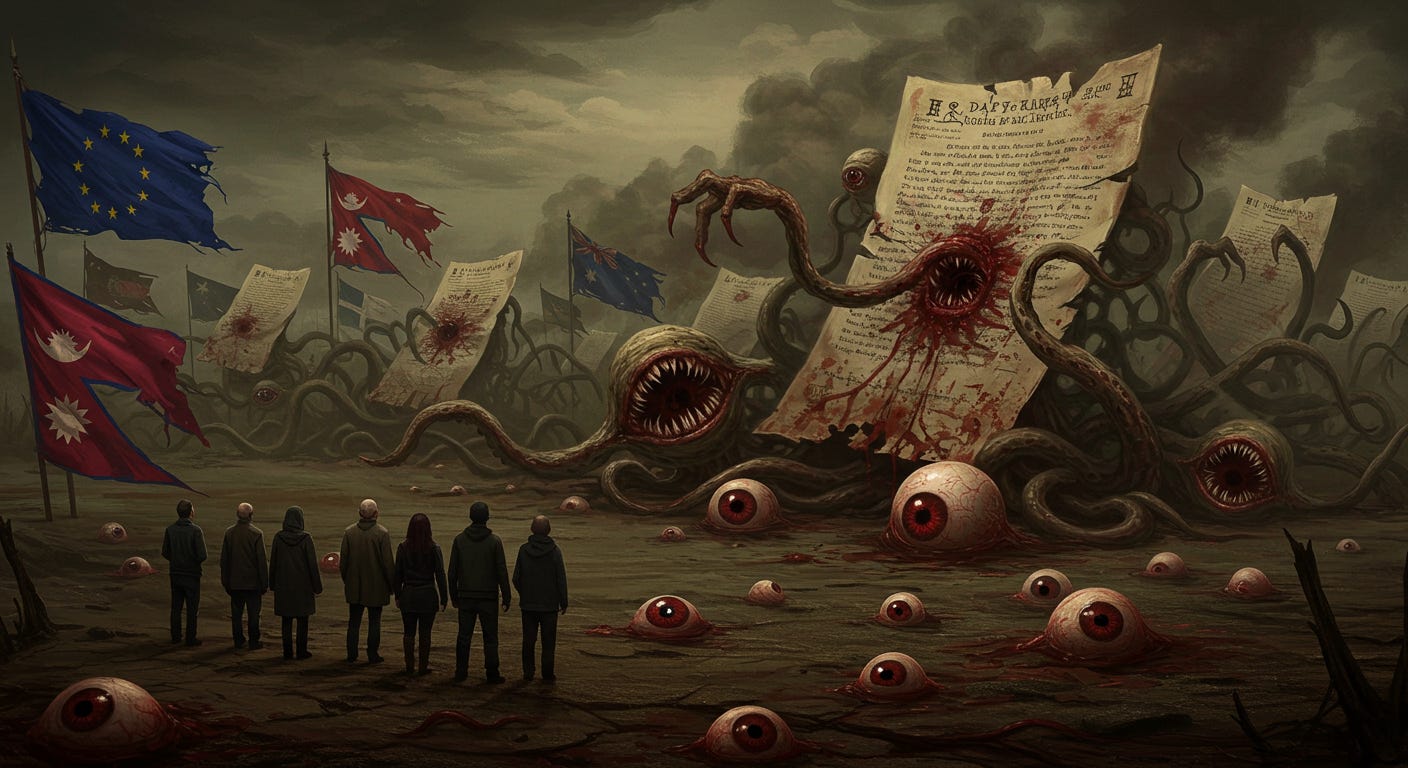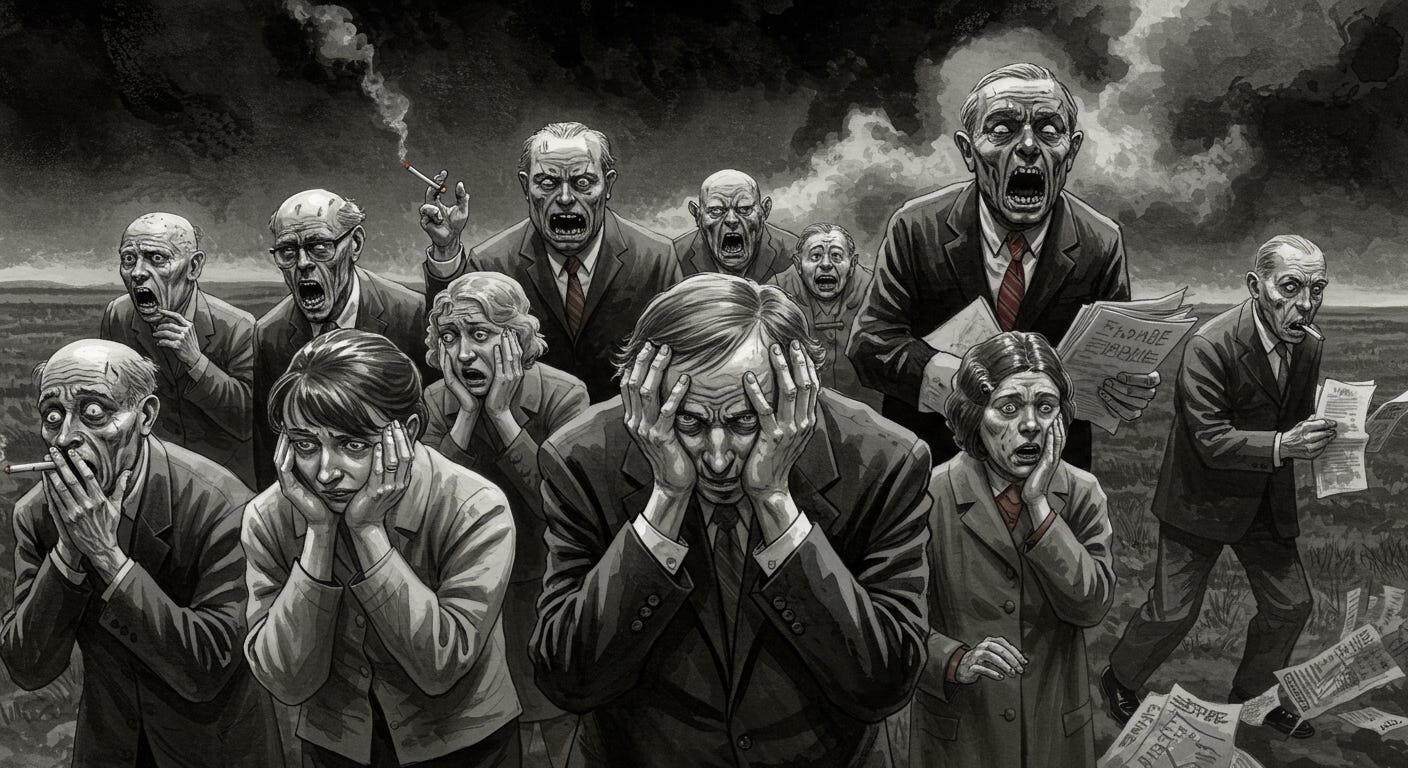Protected to the Point of Suffocation: The Myth of Perfect Prevention and Europe’s New Phantom—Harm Reduction
Between July 1–6, a wave of bans and rules hit Europe. Northern, central, and eastern nations got tougher on new nicotine. The aim: protect. The result: more may stay trapped in smoke.
In the first week of July 2025, as the European summer heat strained the continent's seams, a flurry of decrees, laws, and motions spread from parliaments to newsstands, from pharmacies to inspectorate squads.
Under the banner of public health, Europe moved toward stricter regulation of tobacco alternatives. However, what initially appeared to be a preventive measure is beginning to reveal the shape of a paradox: could this regulatory crusade, in the name of good, ultimately push millions of smokers back into the clutches of combustible cigarettes?
In the North of the Continent That Chose Neutrality… Even in Flavor
On July 1st, Copenhagen awoke to a city that was orderly, clean, and almost sterile. Not just in its streets, but in its shop windows: alternative nicotine products had lost their identity. Bright colors, sleek fonts, even sensory hints had been stripped away, replaced by flat, uniform, silent packaging, like gray-uniformed soldiers, marching toward invisibility.
Six executive orders from the Danish government took effect that day.
Nicotine pouches were capped at 9 mg per unit. All flavors except tobacco and menthol were banned. Retailers, including online shops, had to fortify their systems with age verification. Plain packaging rules have been extended to heated tobacco products (HTPs), which now also require 30% of their surface area to be covered in health warnings. The size of both pouches and heated sticks was regulated.
The logic behind these measures is simple—and seemingly unassailable: protect the young. But under that noble, irrefutable banner rises a regulatory architecture that, rather than preventing harm, ends up excluding.
What happens when the remedy blocks the path toward less harmful forms of nicotine use? When does the adult trying to quit smoking become a perpetual suspect? Isn’t Denmark, in effect, pushing these users into a nicotine limbo—or worse, back into the smoke of traditional cigarettes?
France: A Model of Quality Without Repression
Taking a more measured tone, France adopted a less prohibitionist and more technical approach.
On July 2nd, the French Standards Association (AFNOR) released a voluntary standard for nicotine pouches, which includes 16.6 mg per pouch, pharmaceutical- or food-grade ingredients, toxicological evaluation, packaging standards, and transparent labeling designed to inform, not frighten.
In this scene, tobacco alternatives are not criminalized but guided, as if the state were saying, “I don’t fully trust you, but I don’t want you to fall either.” It’s a middle path reminiscent of the Swedish model, where nicotine pouches have helped dramatically cut smoking rates.
France does not ban—it organizes and suggests.
The Map of an Asymmetric War
In Athens, the Hellenic Parliament debated among Ionic columns and ancestral murmurs. On July 4th, a law was passed banning the sale of tobacco products to minors, mandating age verification, and restricting cross-border trade. The measure will take effect once it is officially published.
In Vienna, the echoes of waltzes gave way to bureaucratic rhythms: the Austrian Parliament’s Health Committee approved the transposition of an EU directive banning flavors in heated tobacco products (HTPs) and requiring graphic warnings. If ratified, a transition period will run until May 2026, allowing for the sale of existing stock.
Meanwhile, the Netherlands and Norway are pushing forward with plain packaging and expanding smoke-free zones: in Oslo, schoolyards have become a regulatory battleground. A new wave of restrictions on online sales is scheduled to take effect in January 2026.
In Warsaw, July 5th marked a sharp regulatory turn: Poland banned sales to minors and all advertising for vapes and pouches, set a nicotine cap at 20 mg/g, and imposed 30% warning labels, with a six-month grace period for market adjustment.
In Sarajevo—more precisely, in the National Assembly of the Republic of Srpska—a law was passed on July 3rd establishing new regulatory categories for tobacco alternatives. It banned sales to minors, restricted use in public spaces, and prohibited the sale of oral tobacco products.
And in Moscow, opposition forces are not fighting to liberalize, but to tighten restrictions. On July 6th, the Liberal Democratic Party (LDPR) proposed a bill directing the government to create a blacklist of prohibited flavorings and additives for both nicotine and nicotine-free vapes. The party’s undeclared goal, according to its leader Leonid Slutsky, is “a total ban as soon as conditions allow.”
The Countries Where “No” Still Echoes
Not everyone bowed to the logic of total control. In Sofia, the Bulgarian Parliament rejected a bill that sought to apply the same restrictions on vaping as on traditional tobacco, even in open-air spaces like playgrounds.
In Bern, the Swiss government passed a law banning nicotine advertising in areas accessible to minors, both physical and digital. However, ads are still permitted in subscription-based publications with at least a 98% adult readership and on online platforms that have adequate age verification measures in place. Its enforcement will depend on a possible public referendum—a rare democratic twist in this policy space that could either derail or legitimize the new legal framework.
In Vaduz, Liechtenstein’s government approved a motion on July 1st to raise the minimum purchase age for tobacco and vaping products from 16 to 18. The reform—an amendment to the Youth and Childhood Act—will be debated in Parliament in September. The proposal also redefines the legal concept of "tobacco product" to include electronic cigarettes.
Beyond Europe’s Radar: Cracks and Resistance
In Kathmandu on June 28th, the Patan High Court disrupted the official narrative. It issued an order forcing the government to suspend its ban on vape imports and sales, arguing that ministerial circulars lacked sufficient legal grounds. The legal battle remains open—a crack through which the legitimacy of vaping might slip.
In Australia, the measures are extreme: flavors are banned (except for mint, menthol, and tobacco), nicotine is capped at 50 mg/mL, tanks are limited to 5 mL, and packaging is restricted to matte gray or white—no more than three tones, in a pharmaceutical style. Since July 1st, pharmacies have been the only legal sales points, and any noncompliant products have been removed from shelves.
In Kyrgyzstan, a law banning all forms of vaping—sales, imports, and use, even in smoke-free zones—took effect on July 1st. It was reinforced on July 4th by an executive order that locks down the country’s borders against such products.
Lasts an Uncomfortable Question: Who Are We Really Protecting?
The dominant narrative invokes childhood and adolescence. But the collateral damage is adult—tangible and urgent. Millions trying to quit smoking now find their alternatives becoming illegal, unreachable, or stigmatized. The irony thickens: the products that don’t kill are banned; the ones that do remain available, taxed, and tolerated.




